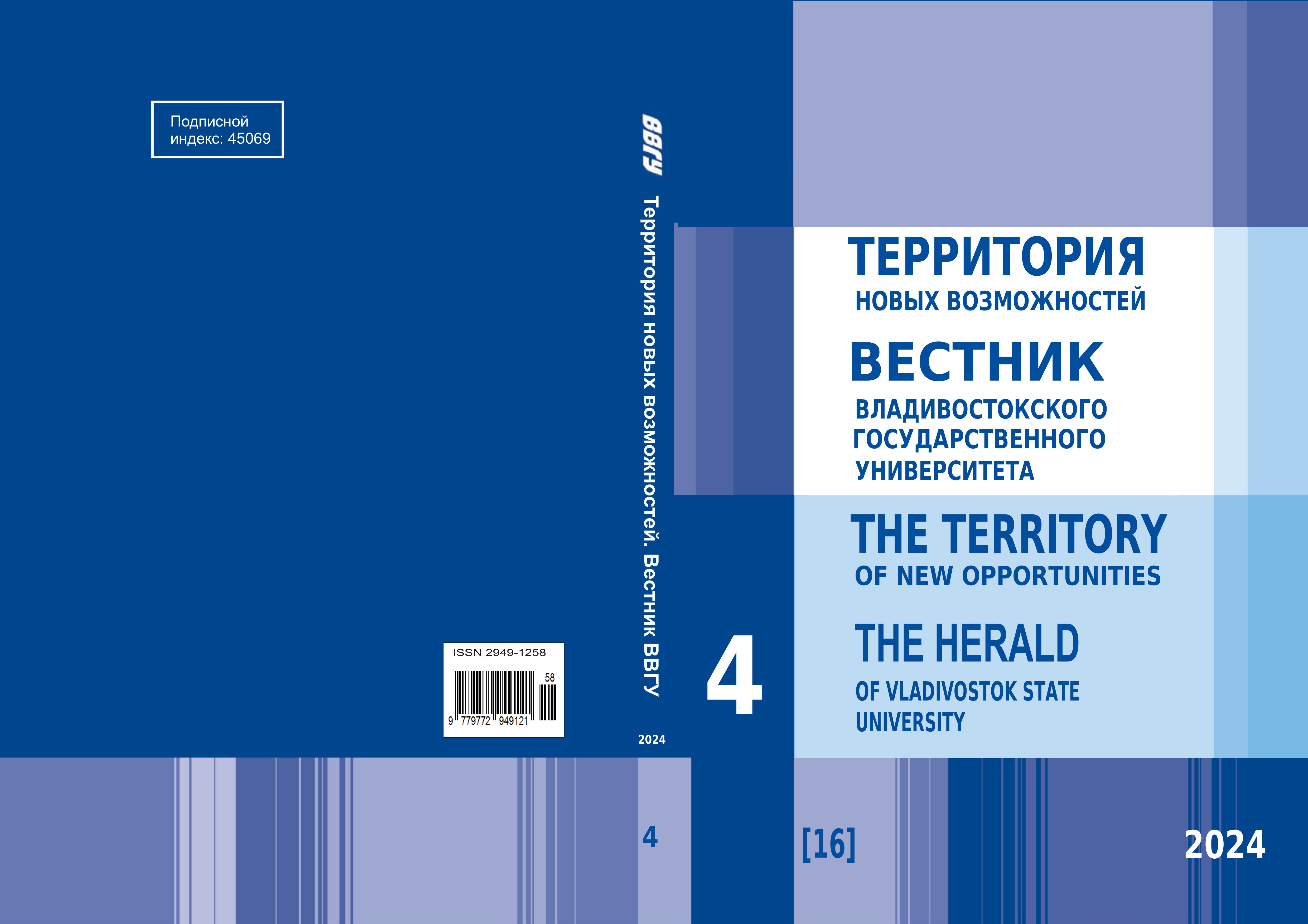Russian Classification of Professions by Education 38.00.00
Smoothing interregional disparities in the realm of a digital economy implies reducing differences as to economy development, access to resources and regions capacity within the country. The relevance of the study results from the issue crucial for achieving balanced development and sustainable growth of the regions. International organizations like UN and OECD have emphasized the importance of bridging the digital divide so that no region is left behind in the digital economy. The authors argue that smoothing interregional disparities in the digital economy depends on the level of technological progress, which can contribute both to eliminating and exacerbating regional disparities. The paper topic has arisen from the growing gap between the regions as to their economic development, which is further influenced by the progress in digital technologies. In a more and more increasingly digitalized world a digital economy has the capacity to either exacerbate or mitigate that regional inequality. The subject of the study is the concept of smoothing interregional disparities, which involves the adoption of policies, technologies and strategies that can narrow the economic gap between more and less developed regions. Disparities at the regional level effect broader national or global patterns. Some regions in the country being digitally developed and others lagging behind, the overall economic structure of the country becomes uneven. It turns out to be a challenge for politicians that causes increasing economic concentration in more developed regions and stagnation or decline in less developed regions. Revealed in the paper are key challenges and reasons of interregional disparities. Suggested here is the methodology of grouping Russian regions by their development level with the tools of cluster and geospatial analysis applied. Defined in the research are strategies for smoothing interregional disparities.
smoothing, interregional inequality, interregional disparities, regional development, clusters, cluster analysis, geospatial analysis
1. Prevraschenie ekonomiki regiona v ekosistemu v paradigme cifrovogo razvitiya / M.A. Bushueva, N.N. Masyuk, Z.V. Bragina, A.S. Ilyuhina // Azimut nauchnyh issledovaniy: ekonomika i upravlenie. 2022. T. 11, № 3 (40). S. 13–18. DOI:https://doi.org/10.57145/27128482_2022_11_03_03. EDN IUKJPE
2. Turning the regional economy into an ecosystem in the paradigm of digital development / M.A. Bushuyeva, N.N. Masyuk, Z.V. Bragina, A.S. Ilyukhina. Azimut Scientific Research: Economics and Management. 2022; 11 (3 (40)): 13–18. DOI:https://doi.org/10.57145/27128482_2022_11_03_03. EDN IUKJPE
3. Regulation of interregional inequality: from diagnostics to modeling / A.A. Merzlyakov, V.S. Bogdanov, K.V. Bykov [et al.]. Moscow: Federal Research Sociological Center of the Russian Academy of Sciences; 2023. 272 p. ISBN 978-5-89697-423-9. DOI:https://doi.org/10.19181/monogr.978-5-89697-423-9.2023. EDN TYHBSS
4. Belousova A.V. Interregional inequality: a quantitative analysis of dynamics and factors (on the example of the Far Eastern subjects of the Russian Federation). Financial Business. 2022; 12 (234): 124–128. EDN FYMNDZ
5. Method of substantiation of the factor portrait of regions / M.A. Bushuyeva, N.N. Masyuk, Z.V. Bragina, A.S. Ilyukhina. Azimut Scientific Research: Economics and Management. 2022; 11 (4 (41)): 14–17. DOI:https://doi.org/10.57145/27128482_2022_11_04_03. EDN HUSSEI
6. Dmitriev S.G., Sevryukova S.V., Milovanovich N.G. Interregional inequality in the level of money income of the Russian population. Creative Economy. 2024; 18 (1): 29–58. DOI:https://doi.org/10.18334/ce.18.1.120330. EDN QLNEOJ
7. Supraregional clusters as a tool for forming management decisions in the ecosystem of the regional economy / M.A. Bushuyeva, N.N. Masyuk, Z.V. Bragina, A.S. Ilyukhina. Azimut Scientific Research: Economics and Management. 2023; 12 (1 (42)): 26–32. DOI:https://doi.org/10.57145/27128482_2023_12_01_05. EDN NXPCCS
8. Zubarevich N.V., Safronov S.G. Interregional inequality in Russia and post-Soviet countries in the XXI century. Regional Studies. 2024; 1 (83): 4–18. DOI:https://doi.org/10.5922/1994-5280-2024-1-1. EDN DPUWWT
9. Proshin V.P., Sergienko N.S. Analysis of the prospects for reducing interregional inequality of Russian regions. Samopravlenie. 2020; 2 (1 (118)): 335–338. EDN LUOYHS
10. Masyuk N.N., Bushuyeva M.A., Zheng F. Innovation clusters: global trends and Chinese experience. Fundamental Research. 2021; (11): 135–139. DOI:https://doi.org/10.17513/fr.43135. EDN BOOORH
11. Katonin S.A. The role of special economic zones and territories of advanced development in smoothing interregional economic disproportions. Universum: economics and jurisprudence. 2024; 5 (115): 27–30. DOI:https://doi.org/10.32743/UniLaw.2024.115.5.17386. EDN BLZNWX
12. Masyuk N.N., Bushuyeva M.A. Innovative development of the region on the basis of clustering as a form of virtual integration of companies. Territory of new opportunities. Bulletin of Vladivostok State University of Economics and Service. 2012; 3 (16): 102–107. EDN PNCRYD





